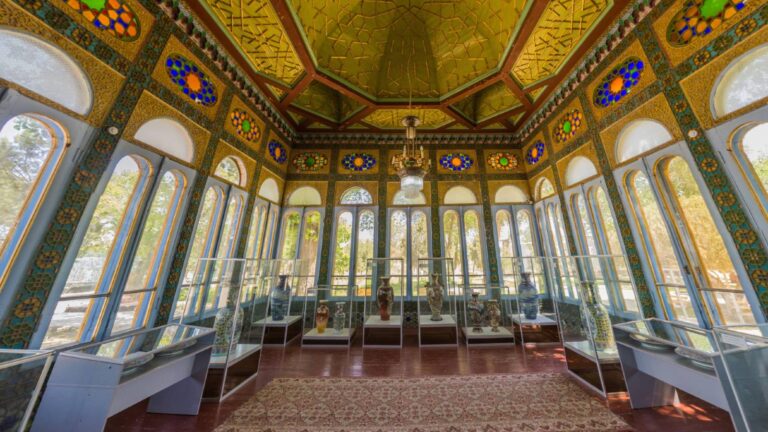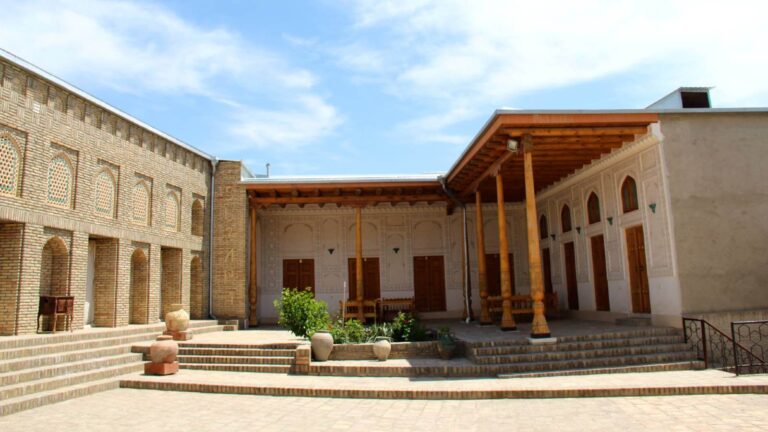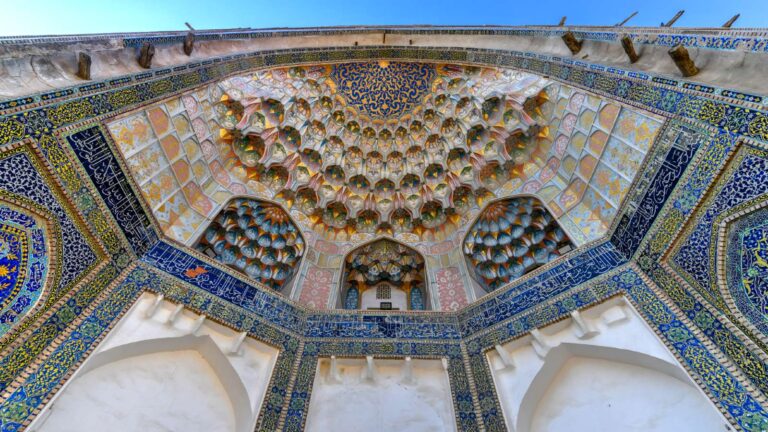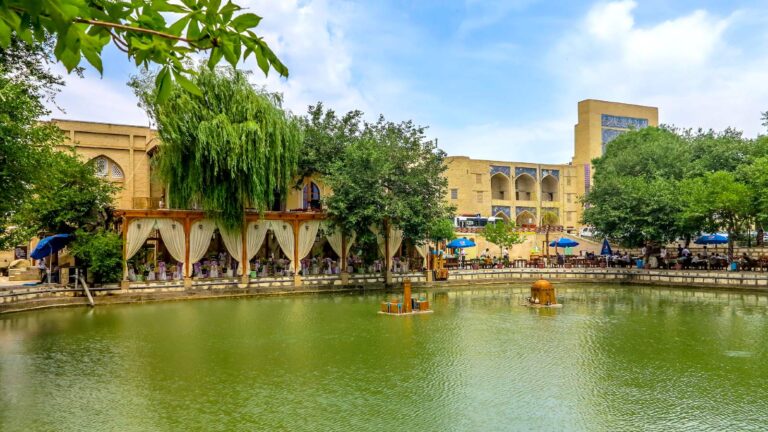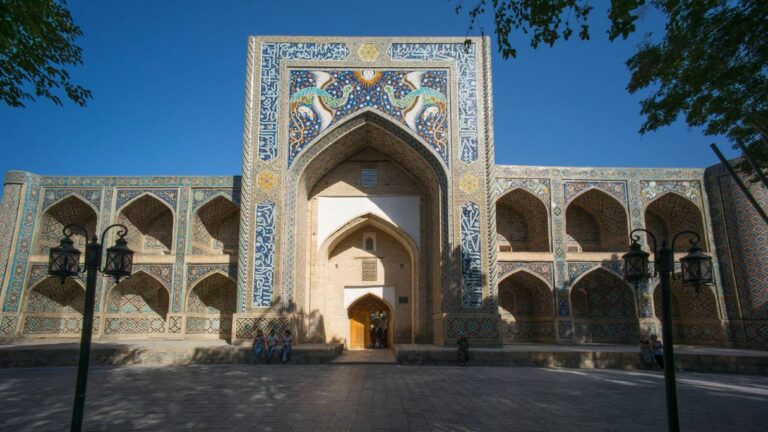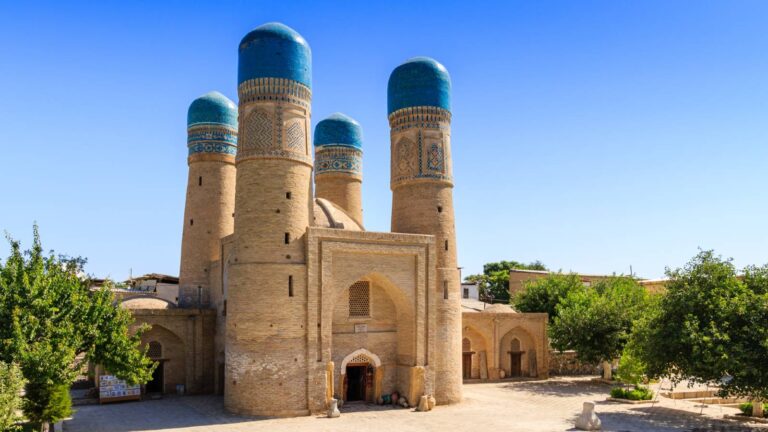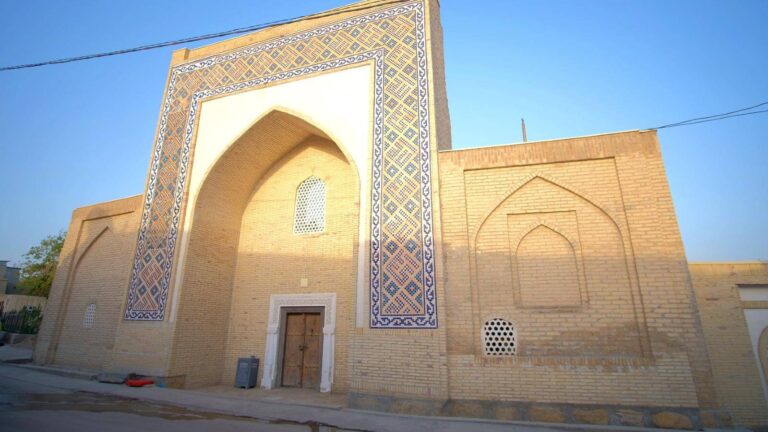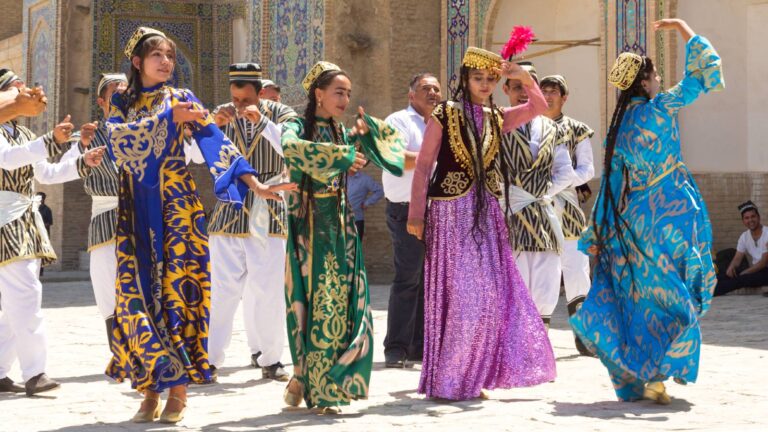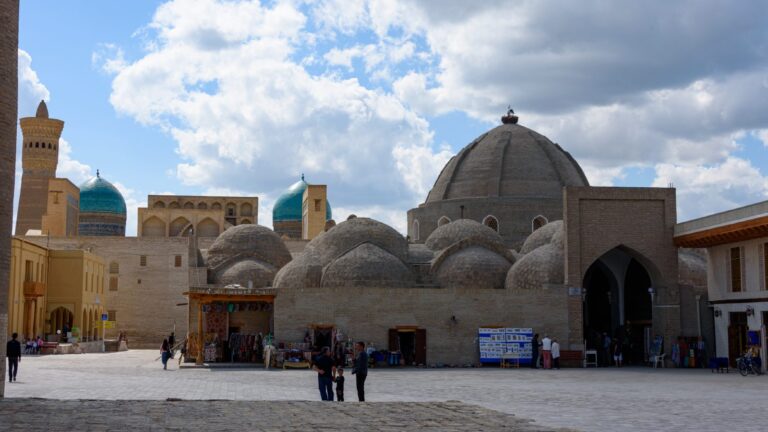Getting There
The mausoleum is located in the historical center of Bukhara, in a park created on the site of an ancient cemetery. From the Poi-Kalyan complex you can walk to the mausoleum in 15 minutes in the direction to the north-western part of the city. If you go by bus number 63, the nearest stop is Kalkhoz Bozor.
What to Expect
The walls of the mausoleum feature decorative brickwork of alternating horizontal and vertical elements. Thanks to these intricate patterns, the mausoleum looks different at different times of day. The chains of brick rings along the cornice resemble Sassanian pearls of stucco decoration depicting drilled beads, which many Central Asian palaces featured in pre-Islamic period. The brickwork in some parts of the mausoleum has interlacement patterns, which adds to the beauty of the structure and highlights the amazing artistry of its builders.
The mausoleum marks a new era in the development of Central Asian architecture after the Arabian conquest. The architects continued to follow the ancient tradition of brick construction, but to a much higher standard than before.
The mausoleum is considered one of the iconic examples of early Islamic architecture and is known as the oldest funerary building of Central Asian architecture. The Samanids established their de facto independence from the Abbasid Caliphate in Baghdad and ruled over parts of modern Afghanistan, Iran, Uzbekistan, Tajikistan, and Kazakhstan. It is the only surviving monument from the Samanid era, but American art historian Arthur Upham Pope called it the “one of the finest in Persia”.
History
During the 10th century, Samanids’ capital, Bukhara, was a major political, trade and cultural center that patronized science, architecture, medicine, arts and literature. Cultural and economic prosperity was fueled by Samanids’ strategic positioning along the trade routes between Asia, Middle East, Russia and Europe. It is believed that the Mausoleum was built to emphasize the dynastic power of the Samani family and to link its history with their newly established capital.
There are various estimates by the researchers of when the Mausoleum was built. Some attribute it to the reign of Ismail Samani (r. 892–907 CE), a founder of the dynasty (b. 849), some reference Ismail’s father, Ahmad, who governed Samarkand. Others attribute the building to the reign of Ismail’s grandson, Nasr II who ruled (r. 914–943 CE). The reason for this later attribution is the lintel with inscribed Kufic script with his name[9] found on the eastern side of the building during the restoration works in 1930s.
In 1930s, Soviet researchers discovered a copy of a 10th-century waqf document (copied around 1568) that specified that Ismail Samani donated Bukhara’s cemetery Naukanda land for what appears to read as a funerary building for his father, Ahmad, confirming earlier assumptions of a dynastic nature of the monument.[8] Before the time of Genghis Khan’s siege and sack of Bukhara in 1220, the mausoleum is believed to have been buried in mud and sand from flooding and landslides, remaining so for centuries. Thus, when the Mongol armies reached Bukhara, the tomb was spared from their destruction, unlike most other buildings of that era. For the same reasons, the building was not known to the world until the early 20th century when archaeologists rediscovered it.
Major exploratory research and excavations took place during 1926–1928 by a Soviet team of architects and researchers. During 1937–1939, the Mausoleum was further studied and major restorations works took place under the leadership of B. N. Zasipkin. Graves of three male bodies have been discovered. One of these is identified as Nasr II from the inscription on the lintel; the identity of the other two is not known.[3] During the Soviet era, some time after World War II, the cemetery that surrounded the Mausoleum was paved over, and an amusement park (still in operation) was built next to and around the building.
Facilities Available
Of all the medieval buildings in Bukhara, the Samanids Mausoleum is of special interest. This world-famous architectural masterpiece was built at the close of the ninth century. The mausoleum was erected as a family crypt immediately after the death of Ismail Samani’s father. Later, Ismail himself and his grandson Hasr were also buried in it. It is interesting to note that erecting crypts was against Islamic law at that time, for Islam forbade erecting any post-mortem monuments upon the tombs of Muslim believers. However, the prohibition was broken in the middle of the ninth century by one of the caliphs himself, for whom a special as-Suli-biya Mausoleum was built. Ismail merely followed his example.
The architecture of dynastic tombs of Samanids inextricably linked with Sogdian tradition and is a kind of transition to a new style of Central Asian architecture. The origins of its architectural forms experts see in the Zoroastrian funerary buildings and temples of fire, a lot of which is preserved in Uzbekistan.


